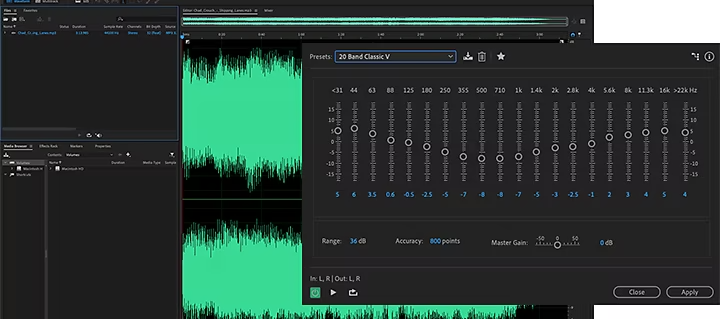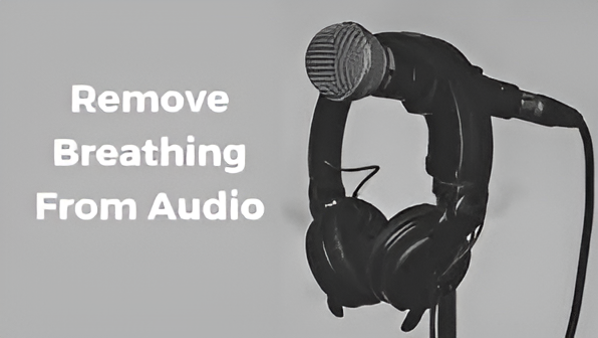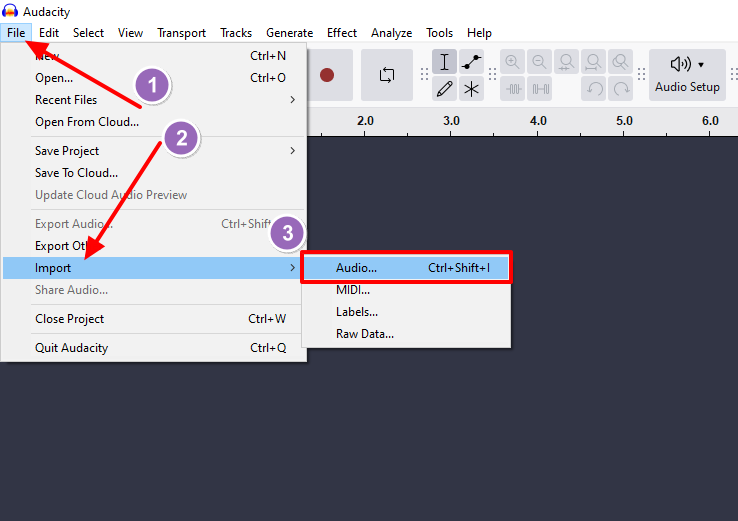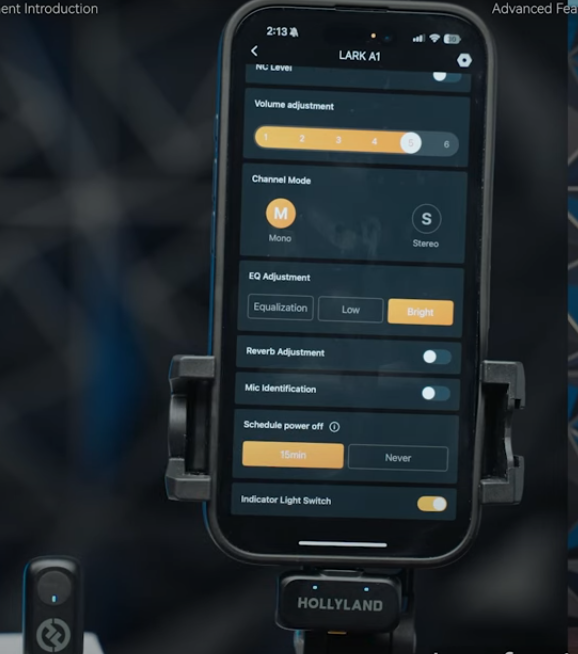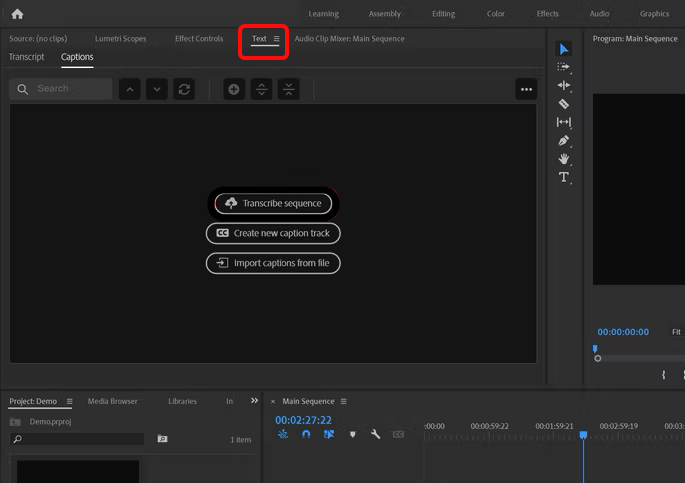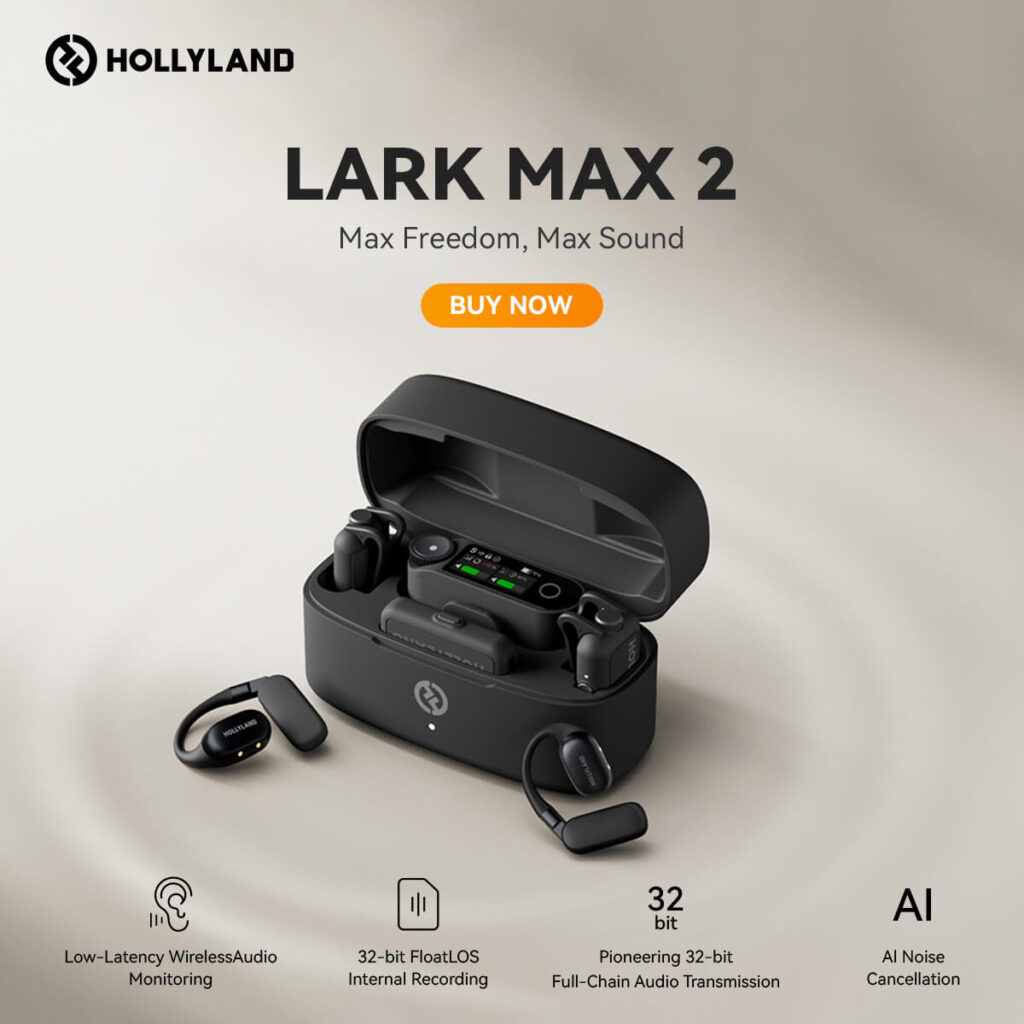When it comes to capturing the richness and nuances of a vocal performance, the right microphone can make all the difference. Whether you’re a budding podcaster, an aspiring singer, or a seasoned recording artist, investing in a top-quality microphone is crucial for that crisp, clear sound that stands out. The market is flooded with options, each promising to be the key to the perfect audio capture. Fear not, as we’ve sifted through the noise to bring you the best microphones specifically designed for vocals. Get ready to elevate your audio with our pick of the bunch!
When selecting the best audio microphone for vocals, there are several key criteria to consider to ensure you capture clear, high-quality recordings. Here’s what to look for:
- Type of Microphone: There are generally two types well-suited for vocals – dynamic microphones, which are great for strong, loud sources and live performances; and condenser microphones, which are more sensitive and ideal for capturing the nuances and clarity in studio vocal recordings.
- Polar Pattern: This refers to how well the microphone picks up sound from different directions. Cardioid patterns are popular for vocals because they capture sound predominantly from the front, minimizing background noise.
- Frequency Response: This indicates the range of frequencies the microphone can pick up. A wider frequency response is generally better, but for vocals, look for a microphone with a response that emphasizes the frequency range of the human voice (approximately 80 Hz to 15 kHz).
- Sensitivity and SPL Handling: Sensitivity measures how well a microphone converts acoustic sound into an electrical signal. Higher sensitivity is often better for studio mics. Meanwhile, SPL (Sound Pressure Level) handling tells you how loud of a sound the microphone can handle without distortion.
- Build Quality and Reliability: Durable construction means your mic will stand up to the rigors of use, especially important for touring and frequent live performances.
- Additional Features and Accessories: Look for features like built-in pop filters, shock mounts, and the availability of accessories that can enhance the recording experience.
| Microphone Model | Approx. Price | Pickup Pattern | Frequency Response | Sensitivity | Output Impedance | Additional Features |
|---|---|---|---|---|---|---|
| Shure SM7B | $400 | Cardioid | 50Hz – 20kHz | -59 dBV/Pa | 150 ohms | Flat, wide-range frequency; air suspension shock isolation; pop filter |
| Rode NT1-A | $230 | Cardioid | 20Hz – 20kHz | -31.9 dBV/Pa | 100 ohms | Low noise; comes with shock mount and pop shield |
| Audio-Technica AT4040 | $300 | Cardioid | 20Hz – 20kHz | -32 dBV/Pa | 100 ohms | High SPL handling; switchable 80 Hz high-pass filter; 10 dB pad |
| Neumann TLM 103 | $1,300 | Cardioid | 20Hz – 20kHz | -23 dBV/Pa | 50 ohms | Low noise; high SPL capability |
| AKG C214 | $400 | Cardioid | 20Hz – 20kHz | -34 dBV/Pa | 200 ohms | Integrated suspension; low cut filter; 20 dB attenuation pad |
Remember, the best microphone for you depends on your specific needs, preferences, the environment you’ll be recording in, your existing setup, and the type of vocal recording you’re doing. If you can, it’s always beneficial to test the microphones with your voice and setup before committing to a purchase.
Sure! Let’s dive into a detailed review for the Shure SM7B.
Shure SM7B
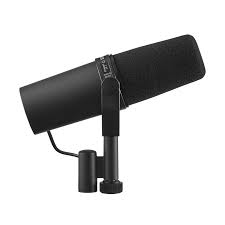
Overview
The Shure SM7B is a dynamic microphone that has gained legendary status in the realm of vocal recording. This microphone is well-celebrated for capturing warm and smooth vocal tones, which makes it a top choice for podcasters, singers, and radio hosts. One of the most remarkable traits of the SM7B is its ability to reject background noise, focusing like a laser on the speaker or singer’s voice. This is excellent for home studios that might not have the best sound isolation.
My experience with the SM7B has been nothing short of fantastic. Recording vocals with it consistently delivers a professional and polished sound. Its performance holds up across different vocal ranges and styles, from soft melodic whispers to aggressive rock howls. Moreover, the build quality feels like it can survive the apocalypse – it’s that sturdy.
Specs
- Type: Dynamic
- Polar Pattern: Cardioid
- Frequency Response: 50Hz to 20kHz
- Impedance: 150 ohms
- Sensitivity: -59.0 dB (1.12 mV)
Pros:
- Exceptionally flat, wide-range frequency response suitable for both music and speech.
- Built-in air suspension shock isolation and pop filter minimize mechanical noise and sibilance.
- Does an impeccable job at rejecting electromagnetic hums often emitted by computer monitors and other studio equipment.
- Robust construction that feels durable and lasting.
Cons:
- Requires a considerable amount of gain, which might necessitate a quality preamp or an inline preamp like a Cloudlifter.
- Not the most versatile for capturing a variety of instruments – it shines for vocals but may not be the first choice for other applications.
- The size and mounting of the mic could feel bulky in smaller studio setups and might require a substantial mic stand to hold its weight securely.
Price
The Shure SM7B typically retails around $399. While this isn’t cheap, it is an investment in audio quality that tends to hold its value well over time. Considering its performance and durability, it’s a professional-grade tool that’s worth every penny for serious vocal recording.
Personal Take
The Shure SM7B is a workhorse and shines where it matters most – delivering exceptional vocal quality with a rich and full-bodied sound. Whether you’re streaming, recording a podcast, or laying down vocal tracks for a music project, this microphone will likely exceed your expectations. It manages to capture the essence of the voice with a smooth and controlled character that makes any recording sound better. Yes, it requires a good setup to unlock its full potential, but that’s a standard trade-off for professional-quality sound. If you are serious about your vocal recordings, consider the SM7B a pillar of studio equipment that’s hard to overlook.
Rode NT1-A
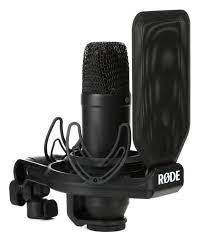
Overview:
The Rode NT1-A is a marvel for its price, capturing the intricacies of vocal performances with a finesse usually reserved for pricier models. This microphone, heralded for its crystal-clear sound reproduction, is a favorite among both burgeoning home studio enthusiasts and seasoned professionals. Its meticulously designed cardioid pattern ensures focused audio capture and minimal room noise. The NT1-A shines through its versatility, ably handling everything from spirited rock vocals to the subtle nuances of jazz, making it a go-to for vocalists seeking quality without breaking the bank.
Specs:
The Rode NT1-A boasts a large 1″ capsule with a gold-plated diaphragm, which contributes to its wide dynamic range and high SPL handling capabilities. This microphone has a frequency range of 20Hz to 20kHz, ensuring that the full spectrum of the human voice is captured with clarity.
Pros:
- The NT1-A’s ultra-low noise level is a standout feature, presenting an almost silent background that’s perfect for clean, professional recordings.
- Its warm yet present sound signature flatters a wide array of vocal types and timbres.
- The accessory package – which often includes a pop shield, shock mount, XLR cable, and a DVD with recording tips – provides excellent value and convenience.
Cons:
- Its brightness can be a double-edged sword, sometimes emphasizing sibilance or harshness on particularly bright or breathy vocals.
- The NT1-A is prone to picking up plosives, making a pop filter practically non-negotiable.
- It may lack the character or color of some higher-end microphones, which might be sought after by seasoned engineers for certain applications.
Price:
The Rode NT1-A is remarkably well-priced, typically hovering around the $200-$250 mark. Considering the quality it delivers, the NT1-A represents a significant bang for the buck for those looking to upgrade their vocal recordings without a hefty investment. The included accessories add further value, reducing the need for additional purchases to get started.
In my opinion, the Rode NT1-A is a stellar microphone, particularly when considering its cost-effectiveness. The clarity it offers is exemplary, making it a prime candidate for those aiming to capture the true essence of their voice. However, one should be aware of its sensitivity to sibilance and plosives; a careful setup and potentially some post-processing might be necessary to achieve the perfect take. All in all, the NT1-A is a solid foundation for any home studio and can serve well in professional environments too, always delivering performances with honesty and a touch of class.
Audio-Technica AT4040

Overview:
The Audio-Technica AT4040 strikes a sweet balance between professional-grade quality and affordability. It’s designed to capture the nuance in every performance, from delicate whispers to powerful belt-outs. Handling everything from the subtleties of a vocal performance to the dynamic spikes with grace, the AT4040 is a powerhouse in the world of studio microphones. With a sleek, black finish and robust construction, it not only sounds professional but looks the part too.
In my personal experience, the AT4040 has been a revelation. Its transparent sound reproduction means that what you put in front of it is what you get in the recording, with very little coloration, which is a dream for mix engineers. The solid build and straightforward functionality allow you to focus more on the performance and less on the technicalities of recording.
Specs:
- Polar Pattern: Cardioid
- Frequency Response: 20 Hz – 20 kHz
- Signal to Noise Ratio: 82 dB, 1 kHz at 1 Pa
- Dynamic Range: 133 dB, 1 kHz at Max SPL
- Phantom Power Requirements: 48V DC, 4.2 mA typical
- Switches: High-pass filter, 10 dB pad
- Weight: 360 g (12.7 oz)
Pros:
- Offers an exceptionally transparent sound for precise vocal capture.
- The high SPL capability allows it to handle intense vocal performances without distortion.
- Its built-in high-pass filter and 10 dB pad offer versatility for various vocal styles and room conditions.
- Robust construction makes it durable for consistent studio work.
- Excellent value for money considering its performance and versatility.
Cons:
- It may require a quality preamp or interface to get the best sound out of it, potentially adding to the cost.
- Its flat and natural response might not suit those looking for a more ‘colored’, vintage sound out-of-the-box.
Price:
The Audio-Technica AT4040 is moderately priced, and for what it offers, the microphone is quite the bargain for professional or semi-professional vocal recording setups. While prices can vary depending on the retailer, you can expect to find the AT4040 hovering around the $300 mark. Given its robust build and exceptional audio quality, it stands as a smart investment for anyone looking to up their vocal recording game without breaking the bank.
The AT4040 is the kind of microphone that makes you want to keep recording just to hear the clarity of the sound it produces. It’s a workhorse that won’t let you down, whether you’re in the middle of a passion project or laying down tracks for a top-tier client.
Neumann TLM 103
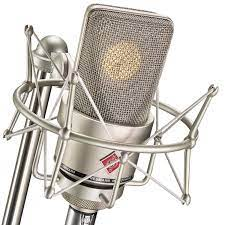
Overview
The Neumann TLM 103 is an exquisite piece of audio technology that has rapidly become a favorite in both professional and home studio settings. From personal use, I can vouch for its incredible performance and reliability. This microphone is well-suited for capturing vocals with precision and warmth, which is a testament to Neumann’s longstanding reputation for craftsmanship.
What strikes me most about the TLM 103 is its sheer clarity. It effortlessly captures every nuance of a performance, from the softest whispers to the most powerful belts. The microphone also adds a certain sparkle to vocals, making them sit prominently in a mix without coming off as harsh or overbearing.
Design-wise, it’s sleek and unassuming. The build quality is solid, reassuring you that it’s built to last. Another aspect worth noting is the low self-noise. When you’re recording quiet passages, this microphone’s ability to stay silent is indispensable. Hands down, it’s a powerhouse that can elevate any vocal performance.
Specs
- Polar Pattern: Cardioid
- Frequency Response: 20Hz – 20kHz
- Max SPL: 138dB
- Self-noise: 7dB(A)
- Signal-to-Noise Ratio: 87dB (A-weighted)
Pros:
- The vocal clarity is exceptional, bringing out every detail in a singer’s performance.
- It has a beautifully balanced sound that adds a professional sheen to recordings.
- The build quality is top-notch; it feels like a premium piece of equipment.
- The low self-noise is a dream for engineers and artists who need pristine recordings.
Cons:
- The price is steep, which might not be justifiable for every budget or beginner setups.
- It lacks multiple pickup patterns, which can limit its versatility in comparison to multi-pattern microphones.
Price
The Neumann TLM 103 is definitely at the higher end of the price spectrum. Depending on where you shop, it can range from around $1,100 to $1,300. It’s an investment, for sure. But in my opinion, if you’re serious about audio quality and are looking for a microphone that can bring a touch of magic to vocals, it’s worth every penny.
In conclusion, the Neumann TLM 103 is not just any microphone; it’s a golden ticket to professional-sounding vocals. Its cost may raise eyebrows, but once you hear it in action, there’s no denying the value it brings to the table. If you’re able to make the investment, it’s a decision that your recordings will thank you for, time and time again.
AKG C214
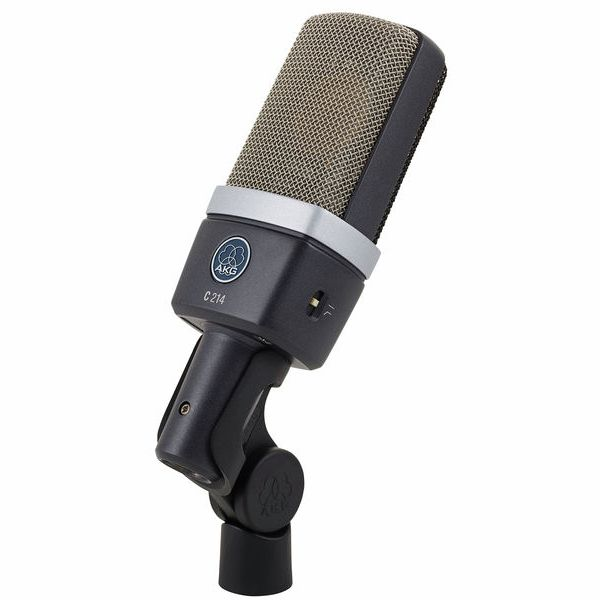
Overview:
The AKG C214 is a stellar microphone that comes from a family with a prestigious lineage — the C414. Without the hefty price tag of its older sibling, the C214 serves as a versatile, lower-cost alternative that still upholds a professional-level quality.
In my opinion, the C214 stands out because it seems to capture the clarity and full-bodied warmth of vocals exceptionally well. Its cardioid pickup pattern does a fantastic job at isolating the vocals, making it a perfect fit for studio applications where you want minimal room noise interference. The build quality is sturdy and exudes a sense of reliability, something that is reassuring if you’re investing in gear that you anticipate using for many years.
Specs:
- Polar pattern: Cardioid
- Frequency response: 20Hz to 20kHz
- Signal to noise ratio: 81 dB
- Equivalent noise level: 13 dB-A
- Dynamic range: 143 dB
Pros:
- The high-end clarity without being sibilant or harsh on the high notes is something I greatly admire in this mic.
- Its ability to handle high sound pressure levels makes it versatile not only for vocals but also for loud instruments, if ever needed.
- The included features like the bass-cut filter and the attenuation pad are practical, allowing for some degree of customization depending on recording environments or vocal styles.
Cons:
- While excellent in its price range, it does miss some of the finesse and multiple polar patterns offered by its pricier relatives, which might matter to those looking for extensive versatility.
- The low end can sometimes feel a bit less present when compared to other mics at this price point, which might require a bit of EQ tweaking during post-production.
Price:
As of my last check, the AKG C214 tends to be priced around $350 to $450. In terms of value for money, I consider it a solid investment, especially for those who want a professional sound without breaking the bank.
In summary, the AKG C214 is a commendable microphone that boasts many of the desirable qualities you’d want for capturing vocals. Its nuanced approach towards clarity, coupled with its robust build and thoughtful design, make it an asset in the studio that can take your vocal recordings to the next level. While it may not outperform the highest-end mics on the market or its sibling C414 in every aspect, its value proposition is hard to beat for those looking to upgrade their vocal recording setup without the premium price tag.
Conclusion:
In conclusion, the quest for the best audio microphone for vocals hinges on clarity, tonal quality, and versatility. Whether you’re a burgeoning home studio artist or a seasoned professional, the right microphone can elevate your vocal recordings to new heights. We’ve traversed the landscape of available microphones to bring you options that provide crisp sound, dynamic range, and robust build quality. Choose any from our curated list and you’re bound to notice a marked improvement in your vocal captures. Remember, the best microphone for your voice is one that complements your unique timbre and recording environment.
If you’re seeking exceptional vocal clarity along with unmatched convenience and mobility, consider upgrading your setup with a wireless lavalier microphone. Ideal for capturing clear vocals without wires holding you back, these compact solutions offer freedom and professional audio quality in 2024.
Best Seller
Sale
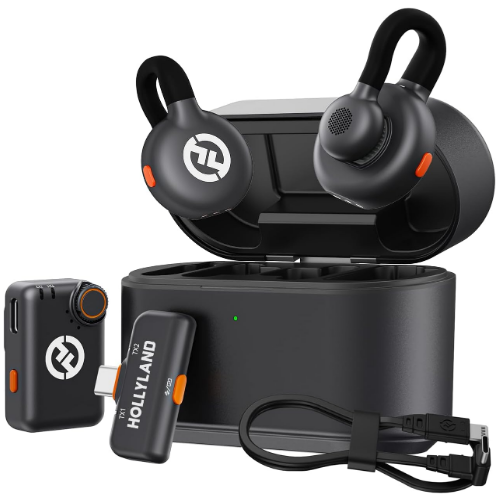
Hollyland LARK M2S – Wireless Clip-on Microphone
- 7g Lightweight, Titanium Clip, Discreet Design
- Clear sound with 24-bit/48kHz, 70dB SNR, 116dB SPL
- Noise Cancellation & 300m Long-Range Stability
- Works with Camera/iPhone/Android/Laptop
- Perfect for Content Creators, Online-Teaching, Streaming
$139
$159
FAQs:
- What’s the difference between dynamic and condenser microphones?
Dynamic microphones are typically more rugged and handle high sound pressure levels well, making them suitable for live performances. Condenser microphones, on the other hand, are more sensitive and ideal for studio recordings due to their ability to capture a wider frequency range and subtler nuances of the voice. - Do I need any additional equipment to use these microphones?
Most condenser microphones require phantom power, which can be provided by most mixing boards or audio interfaces. You may also need a mic stand, a pop filter to reduce plosives (hard “p”, “t”, “k” sounds), and possibly a shock mount to reduce handling noise. - How much should I expect to spend on a good quality vocal microphone?
Prices vary widely, starting from around $100 for basic models suitable for entry-level home studios, to several thousand dollars for professional-grade microphones. Investing more typically affords you better sound quality and durability, but there are many mid-range options that offer excellent performance for their price.






























.png)


